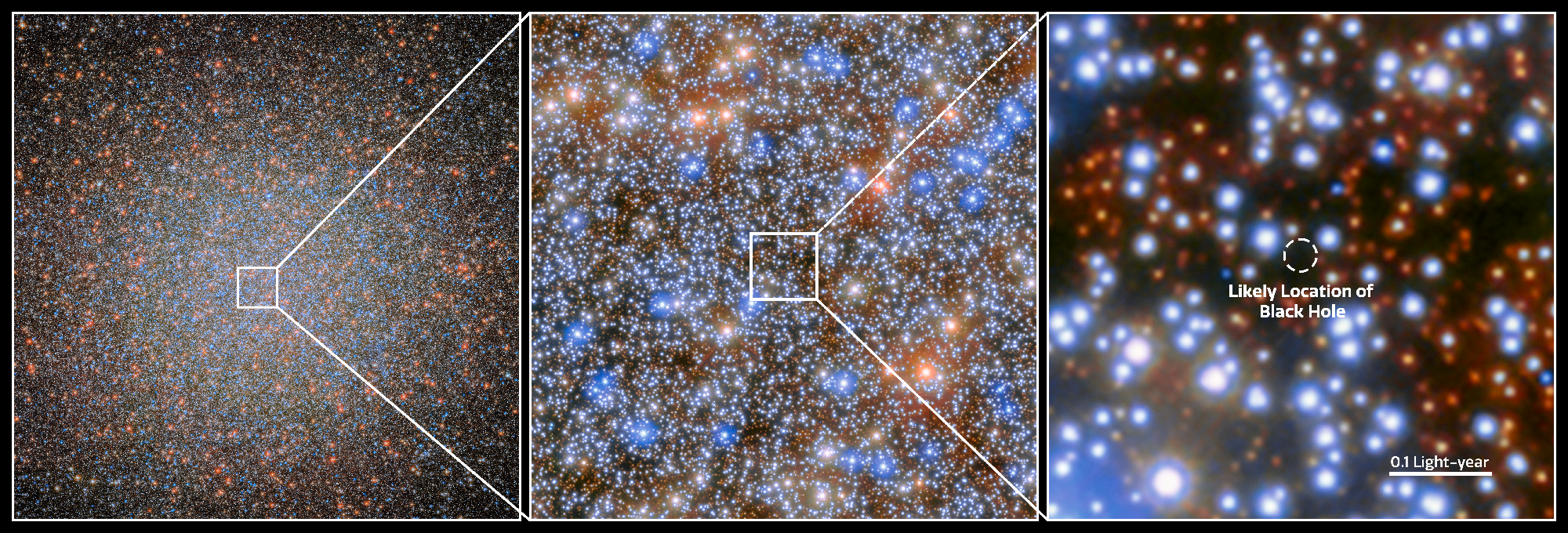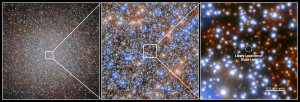
Hubble Evidence for an Intermediate-Mass Black Hole Candidate in Omega Centauri
An international team of astronomers used more than 500 images from NASA's Hubble Space Telescope – spanning two decades of observations – to detect seven fast-moving stars in the innermost region of Omega Centauri, the largest and brightest globular cluster in the sky. These stars provide compelling new evidence for the presence of an intermediate-mass black hole (IMBH) tugging on them. Only a few other IMBH candidates have been found to date. This image shows the location of the IMBH in Omega Centauri. If confirmed, at its distance of 17,700 light-years the candidate black hole resides closer to Earth than the 4.3-million-solar-mass black hole in the center of the Milky Way, which is 26,000 light-years away. Besides the Galactic center, it would also be the only known case of a number of stars closely bound to a massive black hole. This image includes three panels. The first image at left shows the globular cluster Omega Centauri, a collection of myriad stars colored red, white, and blue on the black background of space. The second image shows the details of the central region of this cluster, with a closer view of the individual stars. The third image shows the location of the IMBH candidate in the cluster.
- X



























